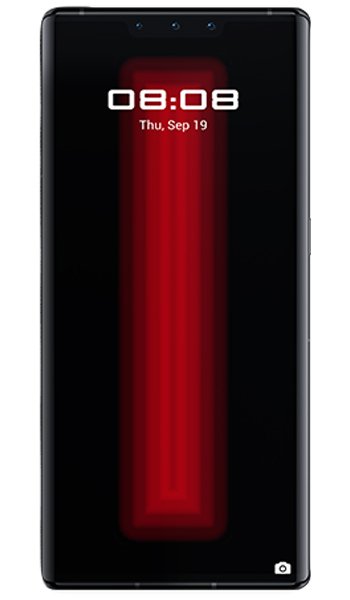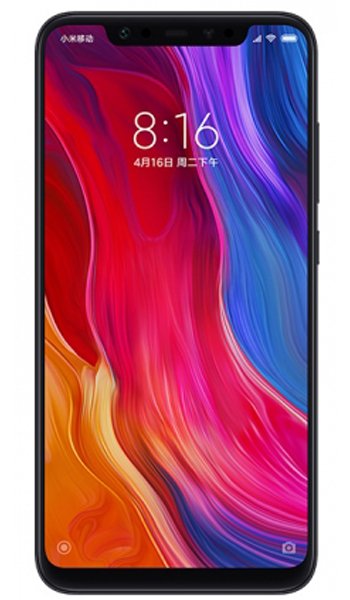Huawei Mate 30 RS Porsche Design vs Xiaomi Mi 8 Comparison and Differences
Smartphone 1

Huawei Mate 30 RS Porsche Design
Smartphone 2

Xiaomi Mi 8
Smartphone 3
Huawei Mate 30 RS Porsche Design or Xiaomi Mi 8 Specs Comparison
or
 Common specs
Common specs
| Brand and model | Huawei Mate 30 RS Porsche Design | Xiaomi Mi 8 | |
| Rating | (+) | (+) | |
| Release date | 2019, September | 2018, May | |
| Dimensions (HxWxD) | 158.1 x 73.1 x 9.3 mm | 6.22 x 6.22 x 2.88 in | 154.9 x 74.8 x 7.6 mm | 6.1 x 6.1 x 2.94 in | |
| Weight | 198 g | 6.98 oz | 175 g | 6.17 oz | |
| Body Build | Front glass, leather/glass back, aluminum frame | Front/back glass (Gorilla Glass 5), aluminum frame (7000 series) | |
| Case | buy from Amazon | buy from Amazon | |
| Colors | Black, Red | Black, Blue, White, Gold | |
| Battery | 4500 mAh, Non-removable Li-Po | 3400 mAh, Non-removable Li-Po | |
| Approximate price | 1700 EUR | 380 EUR | |
| Check price | from Amazon | from Amazon |
 Screen
Screen
| Technology | OLED | Super AMOLED | |
| Touchscreen | capacitive touchscreen | capacitive touchscreen | |
| Display colors | 16M | 16M | |
| Screen size | 6.53" in | 6.21" in | |
| Screen area | 108.7 cm2 | 97.1 cm2 | |
| Screen format | 18.5:9 (height:width) | 19:9 (height:width) | |
| Screen to body ratio | 94.1% | 83.8% | |
| Screen resolution | 1176 x 2400 px | 1080 x 2248 px | |
| Screen PPI /points per inch/ | 409 PPI | 402 PPI | |
| Screen protection | Corning Gorilla Glass 6 | Corning Gorilla Glass 5 | |
| Other specs | - DCI-P3 -HDR10 |
- HDR10 -DCI-P3 |
|
| Screen protector | buy from Amazon | buy from Amazon |
 Camera and Video
Camera and Video
| Rear camera, main | 40 MP, Quad | 12 MP, Dual | |
| Camera specs | -40 MP, f/1.6, 27mm (wide), 1/1.7'', PDAF, OIS -8 MP, f/2.4, 80mm (telephoto), 1/4'', PDAF, OIS, 3x optical zoom -40 MP, f/1.8, 18mm (ultrawide), 1/1.54'', PDAF -3D TOF camera |
-12 MP, f/1.8, 1/2.55'', 1.4µm, 4-axis OIS, dual pixel PDAF -12 MP, f/2.4, 56mm (telephoto), 1/3.4'', 1.0µm, AF, 2x optical zoom |
|
| Functions | Leica optics, dual-LED dual-tone flash, panorama, HDR | Dual-LED flash, HDR, panorama | |
| Video | 2160p@30/60fps, 1080p@30/60/120fps, 1080p@960fps, 720p@7680fps, gyro-EIS | 2160p@30fps, 1080p@30/120/240fps, 720p@960fps | |
| DxOMark Main Score | 99 | ||
| DxOMark Photo | 105 | ||
| DxOMark Video | 88 | ||
| Front camera, selfie | 32 MP, Dual | 20 MP, Single | |
| Specifications | 32 MP, f/2.0 (wide) 3D TOF camera |
20 MP, f/2.0, 0.9µm | |
| Functions | HDR, panorama | ||
| Video | 1080p@30fps | 1080p@30fps |
 Performance
Performance
| Operating system - OS | Android 10; EMUI 10 | Android 8.1 (Oreo), upgradable to Android 9.0 (Pie); MIUI 10.1 | |
| Chipset | - HiSilicon Kirin 990 5G (7 nm+) | - Qualcomm SDM845 Snapdragon 845 (10 nm) | |
| CPU | - Octa-core (2x2.86 GHz Cortex-A76 & 2x2.36 GHz Cortex-A76 & 4x1.95 GHz Cortex-A55) | - Octa-core (4x2.8 GHz Kryo 385 Gold & 4x1.8 GHz Kryo 385 Silver) | |
| GPU | Mali-G76 MP16 | Adreno 630 | |
| External memory | NM (Nano Memory), up to 256GB (uses shared SIM slot) | No | |
| Internal memory | 512GB 12GB RAM, UFS3.0 | 64/128/256 GB, 6 GB RAM 128 GB, 8 GB RAM |
 Benchmark
Benchmark
| Antutu 8 Total | 353884 | ||
| Antutu 7 Total | |||
| GeekBench 6 Single Core | 491 | ||
| GeekBench 6 Multi Core | 1684 | ||
| GeekBench 6 OpenCL | 2045 | ||
| GeekBench 6 Vulkan | 1921 | ||
| GeekBench 5 Single Core | 761 | 447 | |
| GeekBench 5 Multi-Core | 2857 | 1898 | |
| GeekBench 4 Single Core | 2280 | ||
| GeekBench 4 Multi-Core | 8242 | ||
| GeekBench 4 RenderScript | 13089 | ||
| GeekBench 4 Battery | 3965 |
 Communication and Connectivity
Communication and Connectivity
| SIM card | Hybrid Dual SIM (Nano-SIM, dual stand-by) | Dual SIM (Nano-SIM, dual stand-by) | |
| Network | GSM / HSPA / LTE / 5G | GSM / CDMA / HSPA / LTE | |
| Bands | -2G - GSM 850 / 900 / 1800 / 1900 - SIM 1 & SIM 2 (dual-SIM model only) -3G - HSDPA 800 / 850 / 900 / 1700(AWS) / 1900 / 2100 -4G - LTE band 1(2100), 2(1900), 3(1800), 4(1700/2100), 5(850), 6(900), 7(2600), 8(900), 9(1800), 12(700), 17(700), 18(800), 19(800), 20(800), 26(850), 28(700), 32(1500), 34(2000), 38(2600), 39(1900), 40(2300), 41(2500) - Global LTE band 1(2100), 2(1900), 3(1800), 4(1700/2100), 5(850), 6(900), 7(2600), 8(900), 9(1800), 12(700), 17(700), 18(800), 19(800), 20(800), 26(850), 34(2000), 38(2600), 39(1900), 40(2300), 41(2500) - China -5G - 5G NSA / Sub6 / mmWave; N1/N3/N28/N77/N78/N79 |
-2G - GSM 850 / 900 / 1800 / 1900 - SIM 1 & SIM 2 CDMA 800 & TD-SCDMA -3G - HSDPA 850 / 900 / 1700(AWS) / 1900 / 2100 -4G - LTE band 1(2100), 2(1900), 3(1800), 4(1700/2100), 5(850), 7(2600), 8(900), 12(700), 17(700), 20(800), 34(2000), 38(2600), 39(1900), 40(2300), 41(2500) |
|
| Speed | HSPA 42.2/5.76 Mbps, LTE-A, 5G (2+ Gbps DL) | HSPA 42.2/5.76 Mbps, LTE-A (4CA) Cat16 1024/150 Mbps | |
| GPRS | Yes | Yes | |
| Edge | Yes | Yes | |
| Wi-Fi | Wi-Fi 802.11 a/b/g/n/ac, dual-band, DLNA, Wi-Fi Direct, hotspot | Wi-Fi 802.11 a/b/g/n/ac, dual-band, Wi-Fi Direct, DLNA, hotspot | |
| GPS | Yes, with dual-band A-GPS, GLONASS, BDS, GALILEO, QZSS | Yes, with dual-band A-GPS, GLONASS, BDS, GALILEO, QZSS | |
| NFC | Yes | Yes | |
| USB | 3.1, Type-C 1.0 reversible connector, USB On-The-Go | Type-C 1.0 reversible connector | |
| Bluetooth | 5.1, A2DP, aptX HD, LE | 5.0, A2DP, LE, aptX HD |
 Music and Audio
Music and Audio
| Radio | No | No | |
| Headphone jack | No | No | |
| Others | - 32-bit/384kHz audio -Active noise cancellation with dedicated mic |
- Active noise cancellation with dedicated mic |
 Other features
Other features
| Sensors | - Face ID, fingerprint (under display, optical), accelerometer, gyro, proximity, barometer, compass , Infrared port | - Infrared face recognition, fingerprint (rear-mounted), accelerometer, gyro, proximity, barometer, compass | |
| Other extras |
- --Hybrid Dual SIM (Nano-SIM, dual stand-by) - Fast battery charging 40W -Fast wireless charging 27W -Power bank/Reverse wireless charging |
- Fast battery charging (Quick Charge 4.0+) |
|
| Versions |
- Versions: LIO-N29 (Global) |
Reviews and Opinions on Huawei Mate 30 RS Porsche Design and Xiaomi Mi 8
If you had to recommend one of these phones to a friend, which one would it be and why? Share your arguments using the Add Opinion button!

